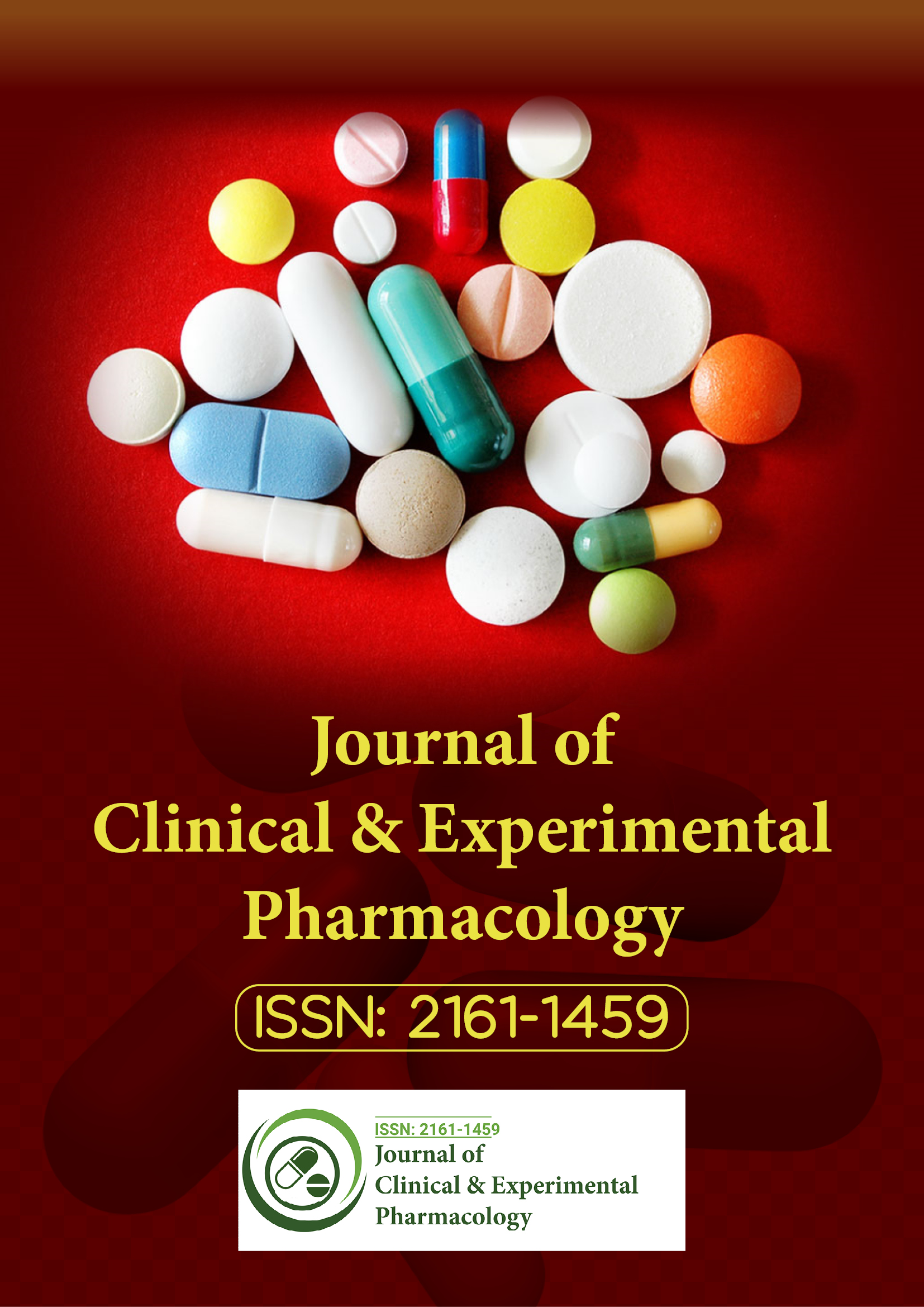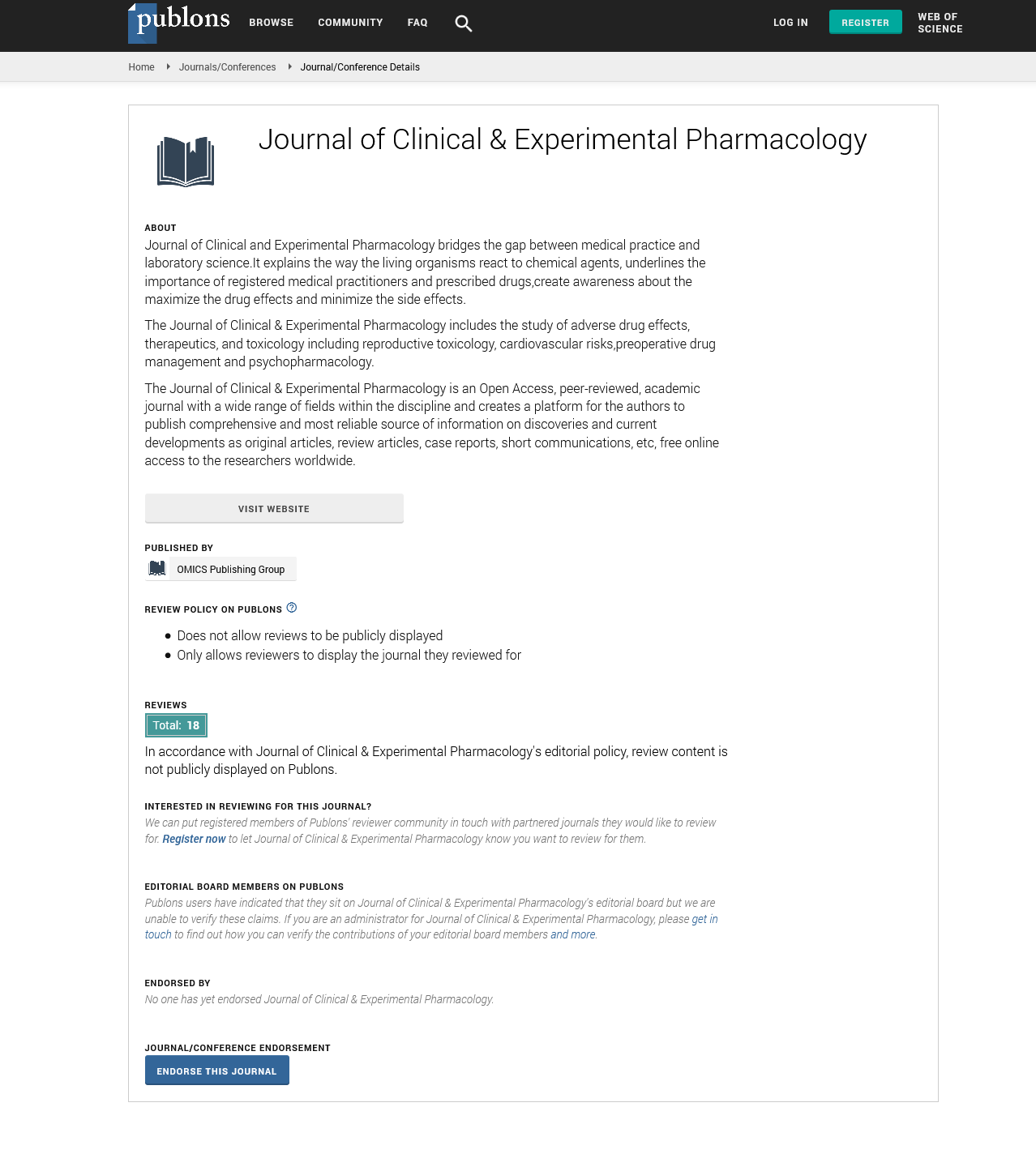Indexed In
- Open J Gate
- Genamics JournalSeek
- China National Knowledge Infrastructure (CNKI)
- Ulrich's Periodicals Directory
- RefSeek
- Hamdard University
- EBSCO A-Z
- OCLC- WorldCat
- Publons
- Google Scholar
Useful Links
Share This Page
Journal Flyer

Open Access Journals
- Agri and Aquaculture
- Biochemistry
- Bioinformatics & Systems Biology
- Business & Management
- Chemistry
- Clinical Sciences
- Engineering
- Food & Nutrition
- General Science
- Genetics & Molecular Biology
- Immunology & Microbiology
- Medical Sciences
- Neuroscience & Psychology
- Nursing & Health Care
- Pharmaceutical Sciences
Caffeine potentiates the release of GABA mediated by NMDA receptor activation: Involvement of adenosine A1 receptors
World Congress on Pharmacology
July 20-22, 2015 Brisbane, Australia
Ferreira D D P1, Stutz B2, de Mello F G2, Reis R A2 and Kubrusly R C C1
Posters-Accepted Abstracts: Clin Exp Pharmacol
Abstract:
Caffeine, a widely consumed psychoactive substance, acts in several targets in the nervous system. We investigated its role in retinal explants of chick embryo analyzing the role of purinergic receptors in [3H]-GABA release induced by D-aspartate (D-asp). D-asp increases GABA-release 4.5-fold when compared to basal levels from 13-day-old chick embryo retinal explants. Caffeine 500?M elevated D-asp-induced GABA release in 60%. The release was inhibited in the presence of NNC-711, a GABA transporter-1 (GAT-1) blocker or by MK-801, an N-methyl-d-aspartate receptor (NMDAR) antagonist. Caffeine did not modify [3H]-GABA uptake carried out for 5, 10, 30 and 60 min and did not increase the release of D-asp or glutamate at basal or stimulated conditions. Caffeine effect was mimicked by the adenosine A1 receptor antagonist DPCPX and by the adenylyl cyclase activator forskolin. It was also blocked by the protein kinase A (PKA) inhibitor H-89, tyrosine kinase inhibitor genistein or by the src family kinase (SFK) inhibitor PP1. Forskolin-stimulated cyclic adenosine monophosphate (cAMP) levels were reduced in the presence of the A1 receptor agonist CHA. Western blot analysis revealed that caffeine increased phosphoGluN2B expression levels in approximately 60% when compared to total GluN2B levels in embryonic E13 retina. The GluN2B subunit-containing NMDAR antagonist ifenprodil inhibited caffeine effect. Our results suggest that caffeine potentiates D-asp-induced GABA release, which is mediated by GAT-1, via. inhibition of adenosine A1 receptor and activation of the PKA pathway. Regulation of NMDAR by phosphorylation of GluN2B subunit by a SFK may also be involved in the effect promoted by caffeine.

